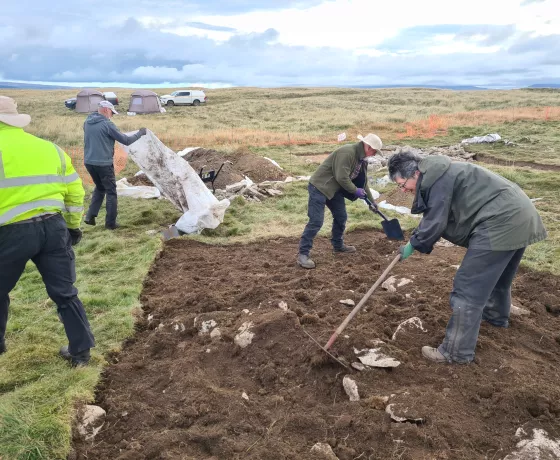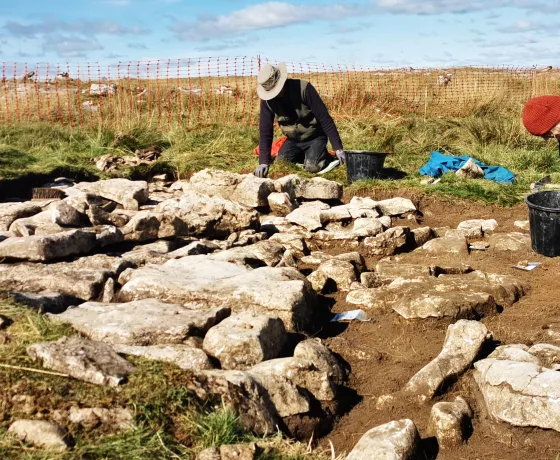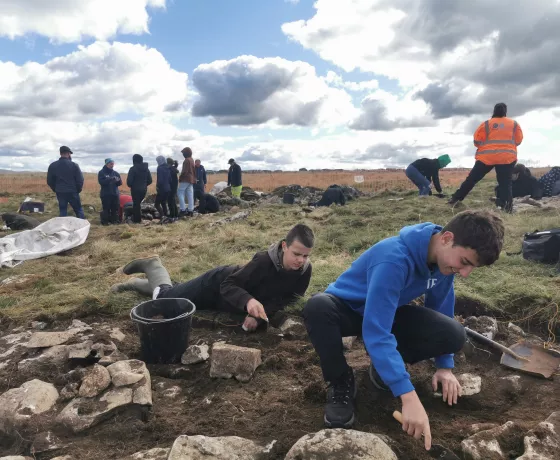So as we start a new week we were promised if not a sunny day, at least a dry one, but that was not too be. So far in our little bit of Cumbria, the forecasters have consistently got it wrong; when we were supposed to get a good drenching, some how the weather clouds bypassed Asby. Then when we were supposed to be dry, as today, there was a rain cloud sitting over us and nowhere else, indeed today has proved to be the wettest day so far. The team of course grinned and bared it and carried on through.
Today we were all now in Area 1, which is the location of our long house, and we had two trenches (2 and 3) still open from the previous day and a third (Trench 1) which was opened today. We also had Jamie up to show some of the volunteers about site recognition, and to let on the big secret that it can be very difficult to spot prehistoric monuments in limestone pavement country. He also took the opportunity to fly Area 1 (which is processing at the moment but will be ready in time for tomorrows blog).

Trench 2, which was being dug by James and Alison, was laid over a very obvious side wall of the long house. This was constructed out of fragments of limestone pavement, and had a couple of stones set upright. Interestingly there was relatively little collapsed stone associated with it, but there was actual reasonable soil deposits above any natural pavement, which immediately distinguished it from those in Area 3. The trench is progressing as we still need to run a section through the wall, but we are anticipating that this will be completed tomorrow.

Trench 3, was set across the wall on the other side of the long house, and was very respectable with a very defined inner face, although the external face was obscured by tumble. Just inside of the wall was a layer of limestone pavement. The question rose as to whether the long house had a full sized wall or originally a dwarf wall, and to be honest the jury is still out. Dwarf walls are normally only about 30cms high and served as foundations for a timber or similar wall. The primary criteria between these and walls of waist height, is the amount of tumble. In the case of the wall examined by Trench 3 there was a lot of tumble and in Trench 2 very little, hence the uncertainty.


Trench 1 was sited so as to examine a geophysical anomaly, that had been highlighted by a magnetometer survey. We have only just started the trench and nothing significant is coming up so far, but there are substantial deposits of soil here and significant remains may still be identified. What has been identified are deposits of charcoal and fragments of chert. Tomorrow will hopefully reveal more.
Tomorrow Mairead Rutherford, the Oxford Archaeologist palynologist (pollen specialist), will be visiting to look at the potential of taking a pollen core from the area around Sunbiggin Tarn. This will hopefully allow us to reconstruct the vegetational history of the area and perhaps show when the major man made vegetational events occurred such as clearance episodes or arable farming.
Other posts in this collection
Read our latest posts about the Little Asby community excavation.




